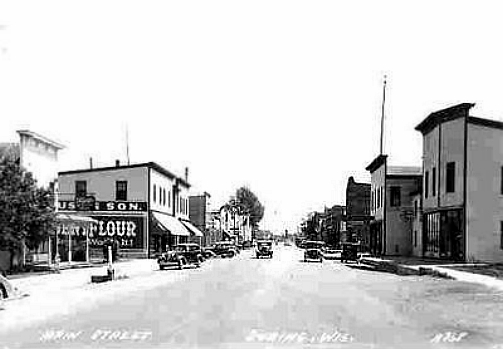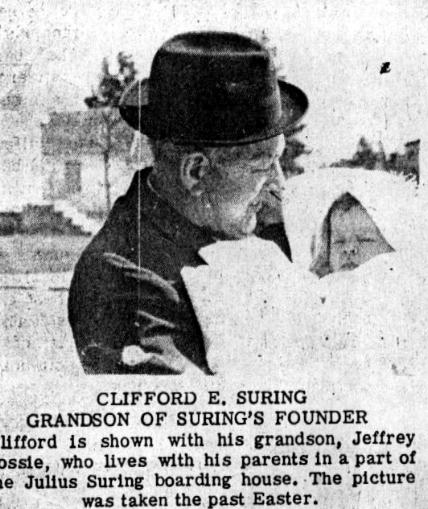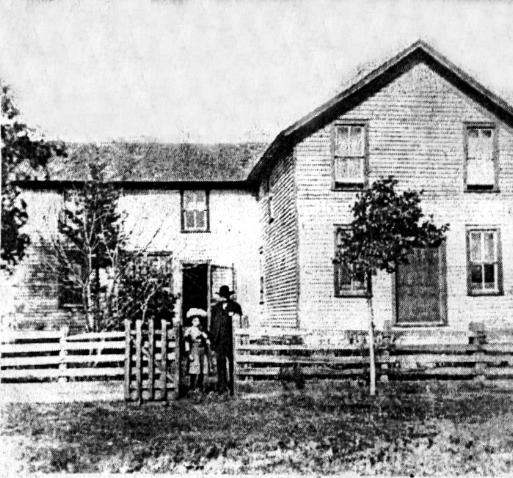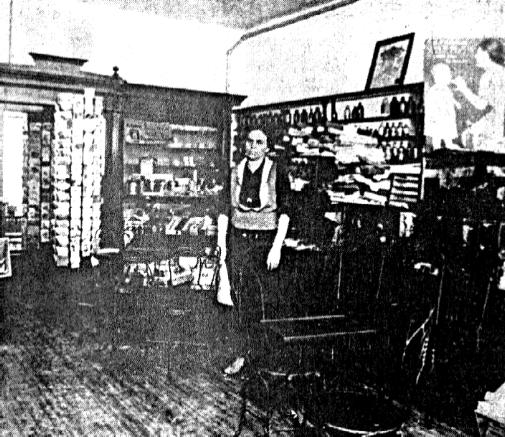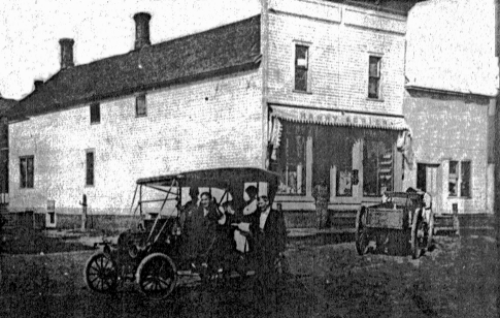November 11, 1971 Written by Bruce Paulson
and posted with his permission.
Suring Named for First Settler
The village of Suring, located near the banks of the Oconto River, was first settled in the year 1880 by Julius Suring who arrived here from Hayes. Mr. Suring moved his family to a small house located near his sawmill and later built a large boarding house on the lot, now owned by Peter Ehlinger, next to the Methodist church. The Suring family lived in one wing of the house and his mill crew lived in another. The house was in two parts; one part connected to John Dieck’s first hardware store, now the Detert building, and the other half is now the home of Robert and Leslie Suring Jossie. Their son, Jeffrey, has the pleasure of living in a portion of his great-great-grandfathers boarding house. Matt Wagner, Sr. arrived in Suring in 1895 and also
erected a sawmill. The Wagner family organized the Farmer’s Mercantile
Company, which is still in operation today as the Suring Family Center.
August Giese and his family arrived in 1880. Mr. Giese is credited with constructing many of the buildings in Suring that are considered landmarks today. John Dieck, long known as “the hardware man”, originally came to Suring in 1896 and engaged in the saloon business. In 1900 he started a hardware business. Dieck and H. P. Sorenson were the first in town to sell automobiles. Anton Averson was Suring’s first storekeeper, settling here in 1896 when the C&NW railroad laid their tracks through the village. Miss Clara Gerndt came to the village in 1902 and opened
a millinery shop, remaining in business for over 60 years. The first hitching
post to stand in Suring was in front of her shop.
In 1908 a fire destroyed six business places on Suring’s Main Street. Because of it’s location near the former Menominee Indian Reservation (now Menominee County), Suring has long been a trading center for members of the tribe. Indians are still a familiar sight in Suring today. The logging industry can be given credit for Suring’s origin. Log drives on the Oconto River flourished until 1926. Logging crews helped the saloon business in the village. As far back as 1902, there were five saloons in Suring. Today there are still eight, six of which are in continuous operation.
The first school and church were erected in the village in 1903. The Methodist congregation has the distinction of being Suring’s oldest. Today Suring is typical of any small town located in a farming area. Her major industries are the remaining lumber processing plants and of course, farming. The village was incorporated in 1915. Suring’s Main
Street has the distinction of being on a line halfway between the Equator
and the North Pole.
|
